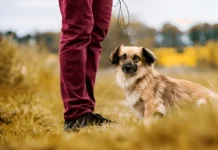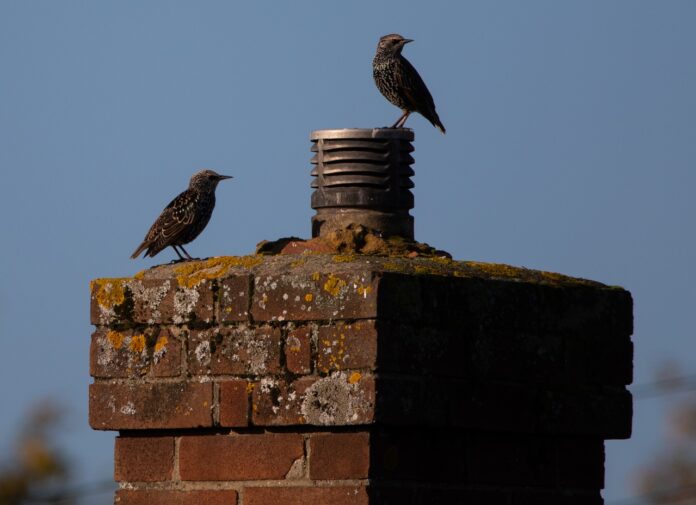If you’ve ever cozied up by the fireplace only to hear scratching or chirping coming from above, you’re not alone. Here in Cape Coral, with all the trees, warm weather, and wildlife, it’s not uncommon for animals to mistake your chimney for a great place to build a home. Birds, squirrels, raccoons—you name it—they all love chimneys, especially if there’s an easy way in.
But what actually happens when you need to get those animals out? Is it just a matter of poking around with a stick or shooing them away? Not quite. Chimney animal removal is a careful, step-by-step process that protects not just your home, but the animals too. Let’s break it down together, nice and easy, like we’re chatting over coffee.
Step One: The Big Check-Up
Before anyone even thinks about climbing up on the roof or reaching into the flue, the first thing a professional does is figure out what’s going on. It’s like going to the doctor—you need a check-up before you can get a treatment.
The inspection usually starts outside. A pro will look at the top of your chimney to see if anything obvious is blocking it—like nests or fur—or if the cap (if you have one) is missing or broken. Then they’ll peek inside using flashlights, mirrors, or sometimes special cameras. Why? Because they need to know exactly what kind of animal they’re dealing with.
Each animal behaves differently. Birds may have soft nests built with leaves and twigs. Squirrels could drag in entire piles of debris. And raccoons? They might even have babies tucked in there. That’s why the first step is never rushed. It’s all about planning the safest, cleanest way to get them out without hurting them—or your home.
Step Two: The Safe Exit Plan
Here’s where it gets interesting. Removing animals isn’t about trapping them by force or scaring them out. In fact, doing that can make things worse. Imagine being trapped in a small, dark place and suddenly someone’s poking at you. You’d panic too, right? Animals are the same.
Professionals use gentle methods, like one-way doors. These are clever little devices that let animals leave—but not come back in. Picture it like those flaps at grocery store exits. The animal gets curious, pushes its way out, and then can’t get back inside.
For birds, especially ones protected by law, removal has to be handled with special care. Sometimes it even involves waiting for chicks to grow large enough to fly before blocking the entrance. Every situation is different, and the pros adjust based on what they find during that first inspection.
Step Three: Cleaning Up the Mess
Once the unwanted visitors are safely gone, you’re left with… well, the mess. Animals don’t exactly keep tidy homes. There could be nesting materials, food scraps, droppings—you name it—all sitting in the flue or smoke shelf. And trust me, you don’t want that stuff hanging around.
Why? First, it blocks airflow. If smoke from your fireplace can’t rise properly, it will leak back into your living room, which is not only annoying but dangerous. Second, those nests can actually catch fire. And third, animal waste can carry bacteria and parasites that you really don’t want floating around your home.
That’s why part of chimney animal removal always includes a thorough cleaning. Think of it like after a houseguest leaves—you wouldn’t just make the bed and call it good, right? You’d vacuum, wash the sheets, and spray air freshener. Same idea here, only with nests and fur instead of pillowcases.
Step Four: Locking the Door Behind Them
You wouldn’t leave your door wide open after someone breaks in, right? Same goes for chimneys. Once the animals are out and the area’s been cleaned up, the last part of the job is making sure it doesn’t happen again.
That’s where chimney caps come in. These sturdy covers fit snugly over the top of your chimney. They let smoke out but keep animals, leaves, and rain from getting in. If your home didn’t already have one, the pros will usually recommend installing one right away. It’s a small price to pay to avoid going through the whole animal removal circus again.
Regular inspections are also key, especially in places like Cape Coral where wildlife is just part of everyday life. A yearly check-up can catch little problems before they turn into noisy, smelly disasters.
Table: Typical Costs for Chimney Animal Removal in Cape Coral
| Service | Details | Average Cost |
|---|---|---|
| Initial Inspection | Full check of chimney and flue | $75 – $150 |
| Basic Animal Removal | Birds, squirrels, small animals | $150 – $300 |
| Complex Removal | Raccoons, large nests, baby animals | $250 – $500 |
| Nest Cleanup | Removal of debris and droppings | $100 – $250 |
| Chimney Cap Install | Prevents future animal entry | $150 – $350 |
| Emergency Service | Same-day or after-hours service | $200 – $500+ |
Why It Matters
So, why go through all this trouble? Because having animals in your chimney is about more than annoying noises or funny smells—it’s about keeping your home safe. Blocked chimneys can lead to smoke and carbon monoxide in your living spaces. Nests can spark fires. And nobody wants to breathe air that’s been swirling around animal droppings.
“The best solution is always prevention, but if animals do find a way in, a safe and thoughtful removal is the only way forward.”
Plus, removing animals humanely means you’re protecting not just your house, but local wildlife too. And let’s be honest—it feels good to know you handled a problem the right way.
Frequently Asked Questions (FAQs)
What animals usually get into chimneys in Cape Coral?
In Cape Coral, the most common visitors are birds, squirrels, raccoons, and sometimes bats. The warm weather and nearby trees make chimneys a cozy spot for them to nest or hide.
How do I know if there’s an animal in my chimney?
If you hear scratching, flapping, chirping, or even odd smells coming from your fireplace or chimney, chances are you’ve got a visitor. Sometimes, you might even see fur or nesting materials sticking out from the chimney opening.
Is it safe to light a fire to scare the animal out?
No, and please don’t try it. Lighting a fire can injure or kill the animal, block smoke from escaping, and fill your home with dangerous gases. Always call a professional first.
Will the removal process hurt the animal?
Nope. Professionals use humane traps or special one-way doors that let the animal leave safely. The goal is always to remove the animal gently and responsibly.
How long does chimney animal removal take?
It depends on the situation. Simple removals might take an hour or two. More complex jobs—like raccoons with babies or large nests—can take longer and might require multiple visits.
What happens if the animal has babies inside the chimney?
If babies are found, pros often wait until they’re old enough to leave safely or remove the whole family carefully together. Every job is handled with care to protect both your home and the animals.
How can I stop animals from getting into my chimney again?
The best fix is a properly installed chimney cap. It keeps animals, debris, and even rain out. Pair that with regular yearly inspections, and you’ll stay ahead of future problems.
Does homeowners insurance cover chimney animal removal?
Sometimes. It depends on your policy and the specific situation. It’s a good idea to call your insurance provider and ask about coverage for animal removal or related damage.
Is chimney cleaning the same as animal removal?
No. Chimney cleaning removes soot and creosote to help prevent fires, while animal removal deals specifically with wildlife. Often, after animals are removed, a cleaning is recommended to clear out any leftover nests or droppings.
Do I really need a professional, or can I do it myself?
While it might seem like a DIY job, animal removal is tricky and can be risky. Professionals know how to handle different species, use proper safety gear, and follow local laws—especially for protected birds or bats. It’s safer (and usually cheaper in the long run) to hire someone who knows what they’re doing.
Final Thoughts: Better Safe Than Sorry
Next time you hear strange rustling coming from your chimney, don’t ignore it. What starts as a few odd noises could lead to bigger problems fast. Luckily, in Cape Coral, there are plenty of skilled folks who know how to handle it all—gently, safely, and thoroughly.
And after it’s all done? You’ll get back to doing what chimneys were made for: warming up your home, not housing the neighborhood wildlife.
Read More : Chimney Sweep
































